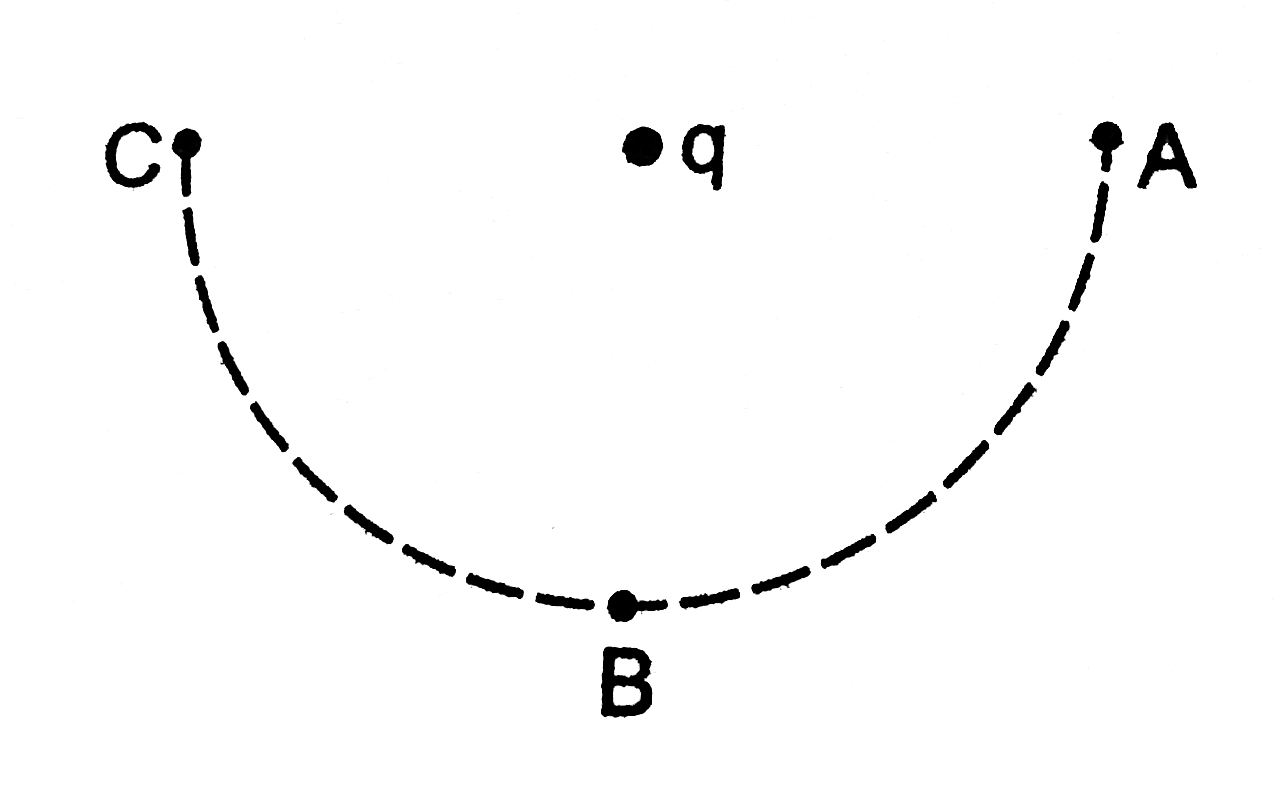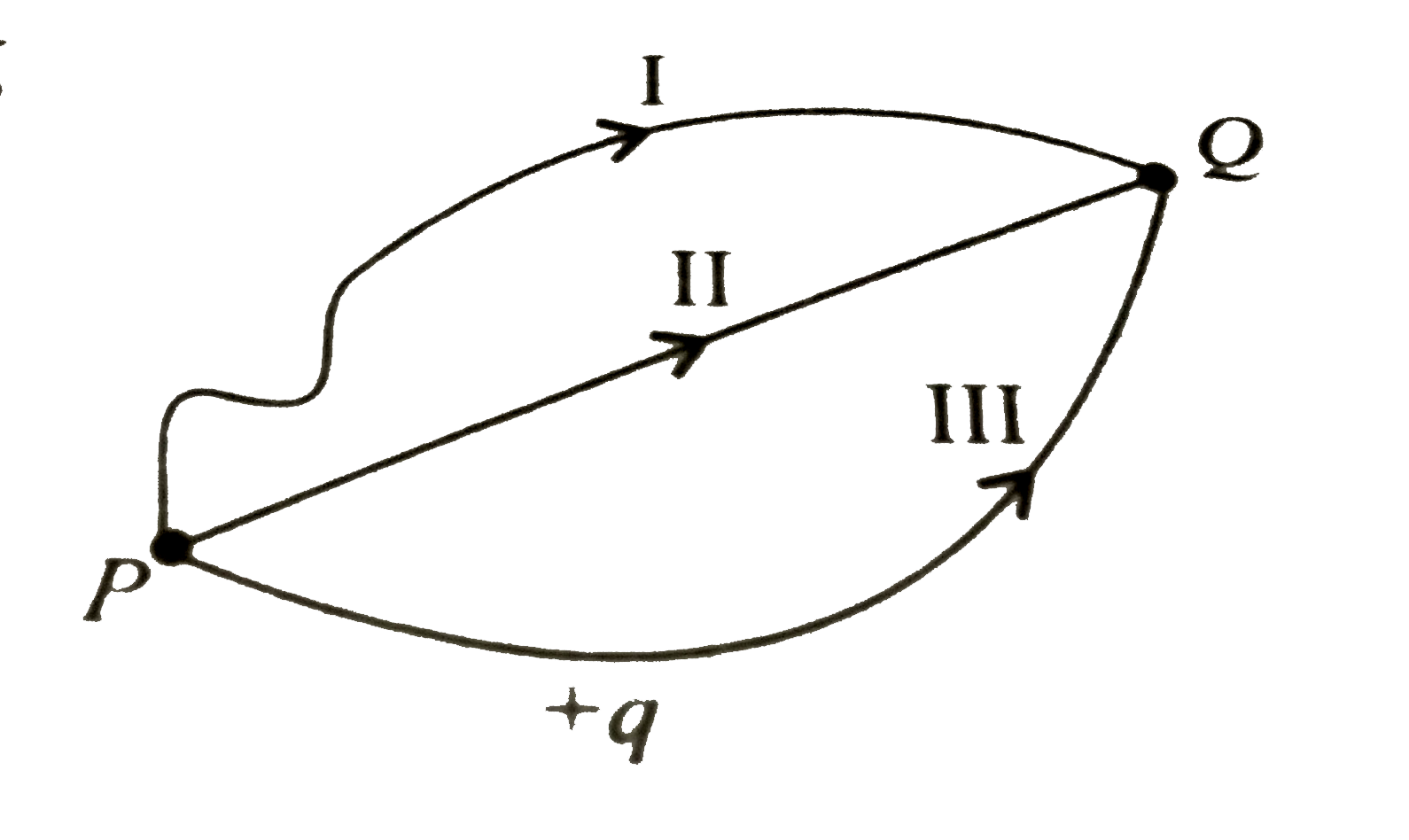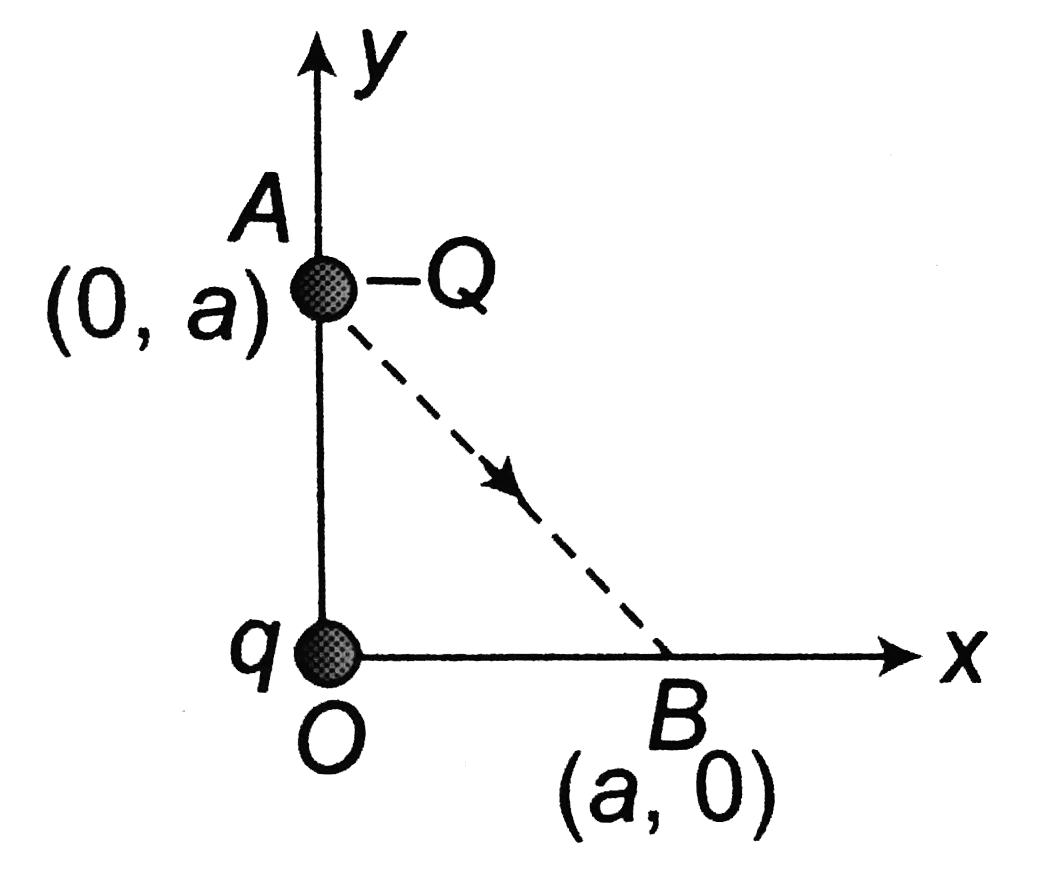The work done in taking a unit positive charge from P to A is WA and P to B is WB. Then
 .
.
WA>WB
WA<WB
WA=WB
WA+WB=0
The correct Answer is:c
As potential at A and B is the same, VA=VB=kQ/d. So work done in both the cases will be the same.
Topper's Solved these Questions
- ELECTRIC POTENTIALBOOK - CENGAGE PHYSICS ENGLISHCHAPTER - ELECTRIC POTENTIALEXERCISE - Multiple Correct
10 Videos
- ELECTRIC POTENTIALBOOK - CENGAGE PHYSICS ENGLISHCHAPTER - ELECTRIC POTENTIALEXERCISE - Comprehension
31 Videos
- ELECTRIC POTENTIALBOOK - CENGAGE PHYSICS ENGLISHCHAPTER - ELECTRIC POTENTIALEXERCISE - Subjective
28 Videos
- ELECTRIC FLUX AND GAUSS LAWBOOK - CENGAGE PHYSICS ENGLISHCHAPTER - ELECTRIC FLUX AND GAUSS LAWEXERCISE - MCQ s
38 Videos
- ELECTRICAL MEASURING INSTRUMENTSBOOK - CENGAGE PHYSICS ENGLISHCHAPTER - ELECTRICAL MEASURING INSTRUMENTSEXERCISE - M.C.Q
2 Videos
Similar Questions
Consider the situation of figure . The work done in taking a point charge form P to A isWA from P to B is WB from P to C is WC.

View SolutionIn the given figure, charge +Q is placed at the centre of a circle. Work done in taking another charge +g from A to B is W1 and from B to C is W2. What is the relation between W1=W2.
View Solution
Knowledge Check
The work done in bringing a unit positive charge from infinite distance to a point at distance x from a positive charge Q is W. Then the potential ϕ at that point is
AWQxBWCWxDWQ
Which among the following statements is true about the work done in bringing a unit positive charge from point P to Q in an electrostatic field ?

View SolutionFind the work done in taking a charge 100μC from C & D.
View SolutionWhen the positively charged hanging pendulum bob is made fixed, the work done in slowly shifting a unit positive charge from infinity to P is V. If the pendulum is free to move, the corresponding work done id V'. Then.
View SolutionA point charge +q is placed at origin O. The work done in taking another point charge -q from the point A to point B along the circular arc as shown in the figure is
_PHY_E05_122_Q01.png) .
.
View SolutionIn the figure given below , the zero potential is taken at infinity. The work done in moving a unit charge from A to B is , Where VArightarrow potential at point A, VBrightarrow potential at point B

View SolutionAs per this diagram a point charge +q is placed at the origin O. Work done in taking another point charge −Q from the point A(0,a) to another point B(a,0) along the staight path AB is:

View SolutionAs per this diagram a point charge +q is placed at the origin O. Work done in taking another point charge −Q from the point A(0,a) to another point B(a,0) along the staight path AB is:

View Solution

